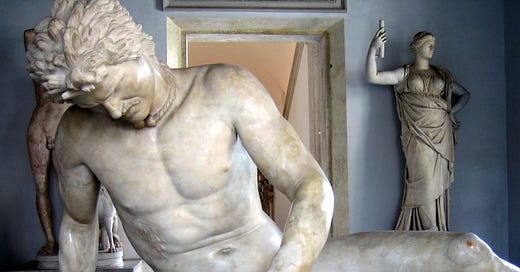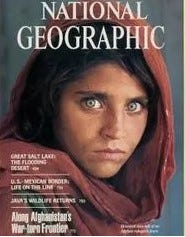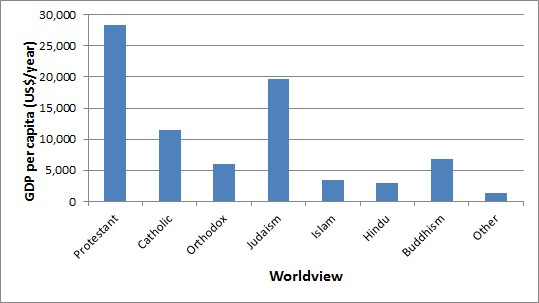'Give me your tired, your poor,
Your huddled masses yearning to breathe free,
The wretched refuse of your teeming shore,
Send these, the homeless, tempest-tost to me,
I lift my lamp beside the golden door!'
Thus says the inscription on the Statue of Liberty, the emblem of freedom in a tired world. Emma Lazarus wrote the poem in 1883 as a fundraiser for the construction of the base of the statue which was given as a gift by the French to the United States.
Migration is the news de jour given Vice President J. D. Vance’s recent speech to European leaders and the efforts of the Trump government to bring order to the disorder of the past four years of immigration free-for-all in the United States. Mark Steyn and Douglas Murray have written books about how the volume of migrants will change the nature of western civilization in unknowable but nasty ways.
I think they are right in the short term but what about the longer term? We might be missing something important.
A friend of mine used to quip that there is a large cave in eastern Germany that, prior to about 900 AD would open up every 400 years and disgorge a million people who, by shear numbers, upset the economies and politics of the countries that they moved into and occupied.
In about 400 BC, the Celts, a largely unknown Germanic people suddenly started showing up all over Europe and the Middle East. They occupied Anatolia (Turkey) and were called the Galatians. They moved into Spain and were called Iberians. They traveled to Ireland and were known as Hibernians or Gaels. They spread all over France and northern Italy and were called Gauls. In England they were the Bretons and the Manx and in Scotland they were the Scotti.
The picture below is the famous statue of the Dying Gaul originally commissioned by King Attalus I of Pergamon (in today’s Turkey) in the third century BC to commemorate his victory over the Galation Celts.
Did the Celts come from the Hallstatt culture of Austria or La Tene culture of Switzerland? There are differing theories. What is known is that Herodotus was aware of them and wrote about their doings. Hannibal, in crossing the Alps with his elephants fought against Gallic tribes of Celts and then incorporated them into his army for a 15 year romp through Italy.
Of the original Celts we know comparatively little except that they clearly arrived en masse because suddenly (in historic terms) they were everywhere and everywhere dominant. They were a migrant invasion that no doubt had tongues clucking.
The next big invasion of migrants was from the Scandinavian Goths who moved south in the region north of the Black Sea in the third century AD. Their descent into this area was likely quite rapid and no doubt they had to scrape out some land by fighting the Sarmatians and Scythians. According to Herodotus, this would not have been an easy task if you were squeamish about having your cranium used as a drinking goblet. Soon the Goths were fighting the Romans across the Danube River and, when pushed hard by the Hunnic tribes of the Central Asian steppe lands, finally over ran the Roman frontier garrisons and eventually arrived in central Europe.
King Theodoric was the first Visigoth ruler, and he was giving the honorific of “the Great” due to his mostly balanced and enlightened rule. Remember it was the Goths who ushered in a Dark Age with the collapse of the brilliance of the western Roman Empire. Except this interpretation is probably not true. The Goths didn’t speak Latin, but neither was theirs a slave culture so “darkness” was in the eye of the beholder. If you happened to be numbered amongst the slaves who comprised 60% of people living in the Roman Empire, becoming free was not likely to have been interpreted as “Dark”.
In less than 200 years, then, two million Vandal and Gothic people left their homes in the north, descended onto the Asian steppes, were pushed west and eventually controlled the remnants of the western Roman Empire. They remained the dominant tribe in Spain until the Moors arrived from Africa in the 8th century and pushed them north into the Franks, a new tribal group descending into France from western Germany.
In the 4th century the Hunnic people of the Asian steppes made a great show of sweeping through Europe but were eventually defeated in France and so returned to their homes in the Asian steppes where their form of battle was more successful. They were replaced by the Pechenegs, the Bulgars, the Magyars who were pushing Slavic tribes westward across the plains of Ukraine and Poland.
The next big invasion that affected western civilization was the southward drift of the Frankish peoples in the 7th to 9th centuries. This story is brilliantly told by the Romano-Gallic priest, Gregory of Tours. With a bit of editing for violence, it is a fabulous story. In fact, La Chanson de Roland, is the epic tale of the Frankish peoples and a complicated fight with the Basques, Visigoths, and Saracens of Spain.
The Frankish king, Charlemagne, was crowned the first emperor of the Holy Roman Empire on Christmas Day of the year 800. He expanded his empire south by pushing the remaining Visigoths out of Navarre and east by conquering the Saxons in central Germany. Charlemagne was likely the first of the Frankish kings to see the Viking sails as they marauded their way up the Seine River.
By this time the Angles and Saxons had invaded southern Britain as the Romans retreated to the mainland in the 4th century. These new Germanic tribes pushed the Celtic Britons into the marshes of Wales and north into Scotland.
Beginning in the late 9th century, the Danes and their Scandinavian cousins started carving out the Danelaw in northeast England. At first these Vikings were happy to raid the coastal cities and monasteries but eventually decided to settle down and build their own civilization on the foreign shores. In an interesting and hopeful reflection on today’s climate concerns, it is argued that the Medieval Warm period, starting in the 10th century, resulted in greater wealth and population in Scandinavia requiring a migration of some of the freebooting Norse giants to reduce local population levels.
The Vikings who remained in France were known as Normans (Northmen). Other Vikings, known as Varangians, traveled east to the Dnieper River and built their capital at Kiev. These “House of Rurik” people eventually became known as the Rus. Being relatives, the two migrating “wings” of the Vikings often traded with each other and into the harems of the Middle East. It is estimated that 250,000 women and girls from England, France and Ireland were captured and sold into the Middle East between 800 and 1100 AD., possibly explaining the eye colour of Sharbat Gula, a twelve-year-old Afghan girl.
The point to this summary walk through the history of migration is to point out that mass migrations are not new. It turns out that, historically, we have all been colonialists. I suppose that the arrival of a million Goths into central Italy was as shocking to the late empire Latins as the recent arrival of 15 million migrants across the southern border of the United States.
Common to all these migrations, apart from the fact that the people involved all seemingly came out of the same cave in eastern Germany, is that they left behind the cultures and worldviews that brought them to their destinations and became Christians. It didn’t happen immediately, these transformations take time. But that they happen begs the question.
Is it possible that migrations demonstrate that worldviews are not equal and that, over time, the most productive worldviews will become dominant? This substack was created on the premise that cultures and economies are controlled by underlying worldviews and that some worldviews are more productive than others as shown in this chart.
The history of western civilization would seem to add support to that view.
(All images but the chart are from Wikipedia.)







Meanwhile there are now 8 billion human beings on the planet and we now live in a quantum world wherein everybody is instantaneously inter-connected.
There are now well over 100 million displaced persons with 50 million of those classified as refugees with more or less nowhere to go.